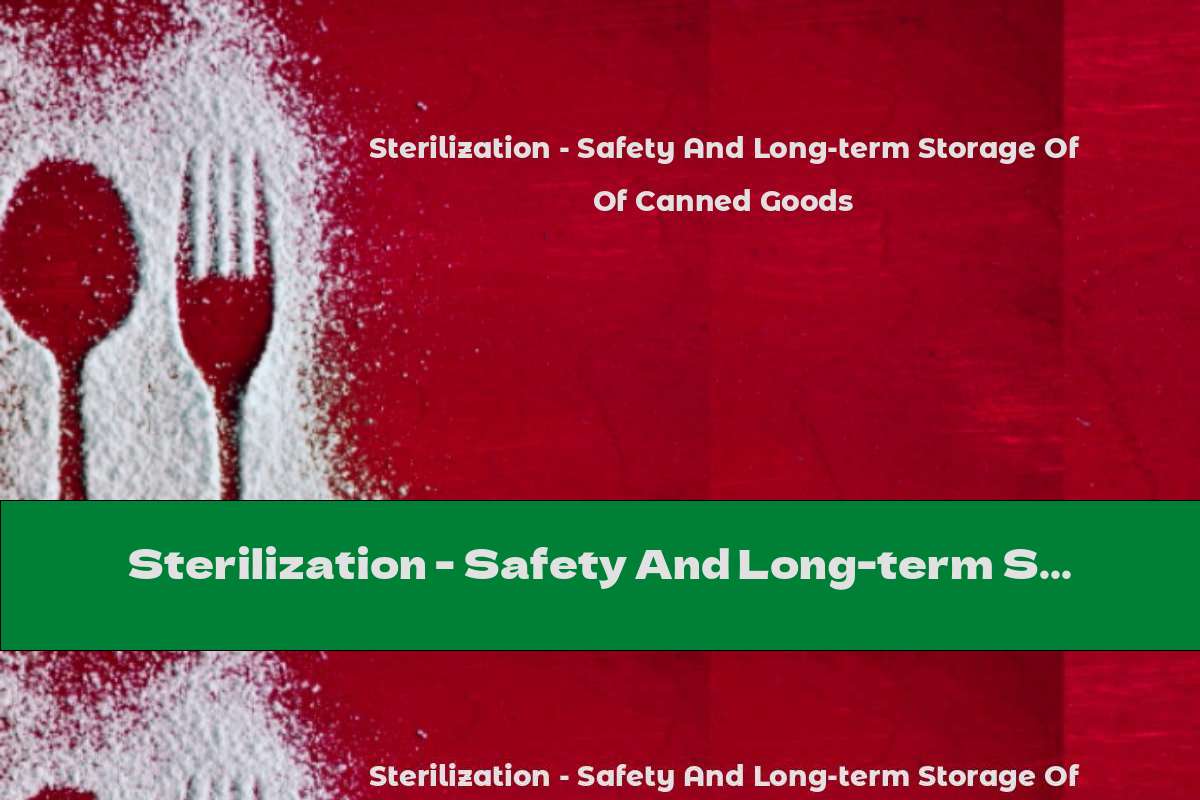Sterilization - Safety And Long-term Storage Of Canned Goods
 Author: Alexander Bruni
Time for reading: ~3
minutes
Last Updated:
October 04, 2022
Author: Alexander Bruni
Time for reading: ~3
minutes
Last Updated:
October 04, 2022

CHAPTERS (Table Of Contents)
Sterilization of canned goods is the main and final stage of food preservation and consists in the heat treatment of the product, which ensures the complete destruction of heat-resistant bacteria and the reduction of the number of spore-forming microorganisms to a safe level that will allow long-term storage of the product. At a temperature of 100°C, the microflora is completely killed, with the exception of spores, which
Sterilization is food processing that ensures the destruction of microorganisms and spores in it.
Sterilization can be done by
-
Heating to a high temperature .
-
Processing of ionizing radiation.
-
By other methods or a combination of several of them, for example, by introducing chemicals followed by heating to a high temperature .
Sterilization of canned goods is the main and final stage of food preservation and consists in the heat treatment of the product , which ensures the complete destruction of heat-resistant bacteria and the reduction of the number of spore-forming microorganisms to a safe level that will allow long-term storage of the product . At a temperature of 100°C, microflora is completely killed, except for spores, which can be destroyed only at 120°C and above.
Cans are sterilized at a temperature from +75 to 120°C. The choice of temperature depends on the active acidity of the product , which affects the heat resistance of microorganisms.
In highly acidic products with a pH higher than 4.3 - canned vegetables, fish, and meat - various putrefactive anaerobic and other microorganisms, the spores of which are very heat-resistant (such as the causative agents of botulism), develop well. Therefore, such canned goods are sterilized at a temperature above 100°C.
If the active acidity of the product is high with a pH below 4.2 — fruit preserves — then a temperature of 100°C and below is sufficient for sterilization to suppress mold and yeast, which develop well in an acidic environment, but are not heat-resistant. It is the acidic environment that reduces the heat resistance of spores and other microorganisms.
You can do without sterilization
-
If the products are not intended for long-term storage.
-
If canned fruits contain enough acid.
-
As we know, high acid concentrations interfere with the growth of microbes. After all, sour fruits and vegetables (tomatoes, sorrel, rhubarb, rowan, currant, gooseberry, cherry, etc.) can be canned without hesitation.
-
When processing low-acid products (carrots, beets, peas, cucumbers, beans, etc.), it is necessary to add food acid (acetic, citric, malic).
PREMIUM CHAPTERS ▼
At home, sterilization is carried out as follows (PREMIUM)
First, containers for storing products are prepared and sterilized - most often, these are glass jars. To do this, they are thoroughly washed in hot water with soda, boiled in water or kept over steam for 20-25 minutes. You can also warm the jars in the oven, but for a longer period of time. Tin lids are boiled in water for 8-10 minutes.
Prepared fruits (preliminarily sorted, washed, cleaned, if necessary cut) are placed in jars and poured with hot syrup. The level of the products together with the filling in the jar should be 1.5-2 cm lower than the upper edge of the container. After that, the jars are covered with processed lids and immersed in a pot of warm water. The water level in the pan, in turn, should not be lower than the capacity of the cans. You should put a wooden or metal grate on the bottom of the pan, or you can use a cloth folded in half. This will protect the cans from damage during sudden temperature fluctuations .
The water in the pot is brought to a boil - it is from this moment that the sterilization time is calculated .
At the end of the processing, the cans are immediately removed from the pan and, without removing the lids, quickly closed with the help of a rolling machine.
Rolled cans are turned upside down and left to cool.
In some cases, high temperature negatively affects the quality of the product , fruits may lose their consistency, vitamins are destroyed. However, if the correct technological and temperature conditions are followed, sterilization will ensure long-term storage and safety of canned goods.
Related Articles
- The Role of E357 Potassiumadipate in Nutrition: Preservative, Flavor Enhancer, and Safety
- The Ultimate Guide to 5-HTP in Nutrition: Benefits, Sources, Supplements, and Safety
- The Role of BHT in Nutrition: Benefits, Safety Concerns, and Alternatives
- Exploring the Role of Е412 in Nutrition: Benefits, Concerns, and Safety
- E572: Safety, Uses, and Health Effects in Food Products